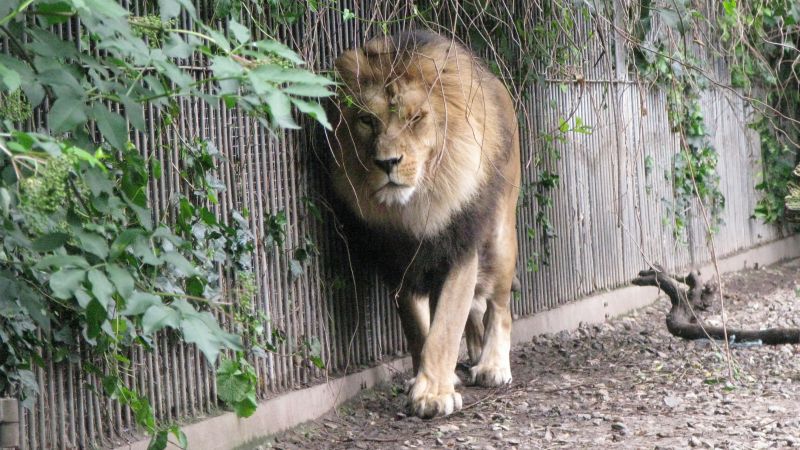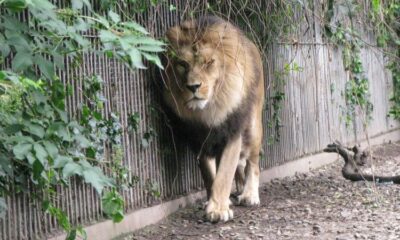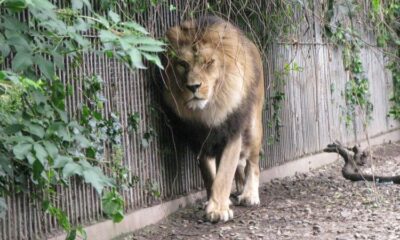Science
Denmark Zoo Seeks Donations of Pets to Feed Predators

A zoo in northern Denmark is encouraging pet owners to donate unwanted animals, including guinea pigs, rabbits, and chickens, to feed its predators. The initiative by the Aalborg Zoo aims to replicate the natural food chain for its carnivorous residents, which include the Asiatic lion, European lynx, and Sumatran tiger.
In a recent Facebook post, the zoo outlined its rationale, stating that “chickens, rabbits, and guinea pigs form an important part of the diet of our predators.” The post featured a striking image of a lynx, emphasizing the zoo’s commitment to ensuring that nothing goes to waste while promoting natural behavior, nutrition, and well-being among its animals.
To clarify, the zoo stated that any donated animals will be “gently euthanized” by trained staff prior to being served as food. This practice is designed to provide the zoo’s carnivores with a diet that mimics their natural eating habits.
The announcement has sparked considerable debate online, with some individuals opposing the notion of turning pets into prey, while others support the zoo’s efforts to maintain authentic feeding behaviors among its predators.
In a statement to The Guardian, Pia Nielsen, the deputy director of Aalborg Zoo, explained that this initiative has been a long-standing practice in Denmark. “For many years at Aalborg Zoo, we have fed our carnivores with smaller livestock,” she said. Nielsen further emphasized the necessity of providing a diet that includes meat with fur and bones to ensure the animals receive the most natural nutrition possible.
“This practice is common in Denmark, and many of our guests and partners appreciate the opportunity to contribute,” she added, noting that the livestock donations typically include chickens, rabbits, guinea pigs, and even small horses.
The issue of animal feeding practices in Danish zoos has previously drawn scrutiny. In 2014, the Copenhagen Zoo faced significant backlash after it euthanized a healthy young giraffe named Marius to prevent inbreeding, despite public petitions to spare the animal. Marius’s carcass was subsequently used for research and to feed the zoo’s carnivores, including lions, tigers, and leopards.
The controversy intensified when, shortly after Marius’s euthanasia, the zoo put down four lions to make room for a new male, hoping to breed a new generation of cubs.
As the Aalborg Zoo continues its initiative, it remains to be seen how the public will react and whether the practice will evolve in light of ongoing discussions about animal welfare and ethics in zoos.
-

 Lifestyle3 weeks ago
Lifestyle3 weeks agoBelton Family Reunites After Daughter Survives Hill Country Floods
-

 Technology2 weeks ago
Technology2 weeks agoDiscover the Top 10 Calorie Counting Apps of 2025
-

 Education3 weeks ago
Education3 weeks agoWinter Park School’s Grade Drops to C, Parents Express Concerns
-

 Technology1 week ago
Technology1 week agoHarmonic Launches AI Chatbot App to Transform Mathematical Reasoning
-

 Technology3 weeks ago
Technology3 weeks agoMeta Initiates $60B AI Data Center Expansion, Starting in Ohio
-

 Technology3 weeks ago
Technology3 weeks agoByteDance Ventures into Mixed Reality with New Headset Development
-

 Lifestyle3 weeks ago
Lifestyle3 weeks agoNew Restaurants Transform Minneapolis Dining Scene with Music and Flavor
-

 Technology2 weeks ago
Technology2 weeks agoMathieu van der Poel Withdraws from Tour de France Due to Pneumonia
-

 Technology3 weeks ago
Technology3 weeks agoRecovering a Suspended TikTok Account: A Step-by-Step Guide
-

 Technology3 weeks ago
Technology3 weeks agoGlobal Market for Air Quality Technologies to Hit $419 Billion by 2033
-

 Health3 weeks ago
Health3 weeks agoSudden Vision Loss: Warning Signs of Stroke and Dietary Solutions
-

 Technology3 weeks ago
Technology3 weeks agoTrump Faces Internal Struggles Over Epstein Files Handling













